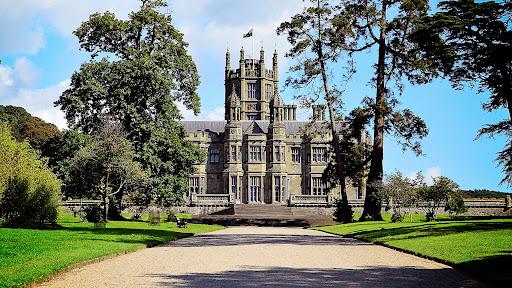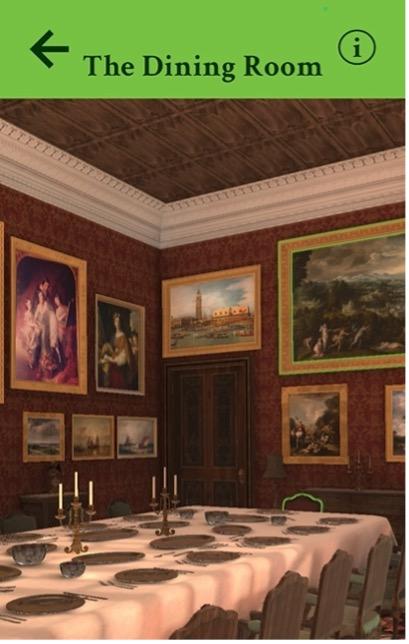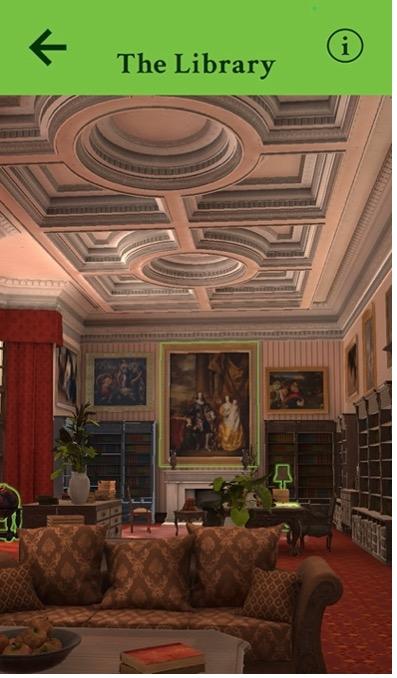Launch of new augmented reality M[AR]gam App
Margam Castle with its octagonal tower is a familiar landmark in the Port Talbot landscape, but now a ground-breaking augmented reality app called ‘M[AR]gam’ is allowing visitors to explore its lost interiors for the first time. The app was launched in the Castle on the 23rd of January 2025, and our Research and Engagement Associate Bethan Scorey went along to find out more.
Margam Castle is an impressive Tudor Revival country house built in 1830-35 to replace a Tudor house on the same site. The patron was Christopher Rice Mansel Talbot (1803-1890), who had recently developed the Margam estate into an extensive ironworks served by a port, and his architect was Thomas Hopper (1776-1856), also responsible for Penrhyn Castle near Bangor.
Margam Castle remained in the ownership of the Talbot family until 1941, when the house was sold to a local landowner and its contents was sold at auction. However, the period of neglect that followed and the disastrous fire of 1977 have left the interior gutted. The house and its grounds are now in the custodianship of Neath Port Talbot Council, who have opened the grounds to the public and embarked upon an ambitious restoration programme.

The Margam Interiors project, a collaboration between Neath Port Talbot Council, CFP Landscape and Heritage Consultancy, and the Centre for Heritage Research and Training (CHART) at Swansea University, was launched in 2023 in order to explore how the lost interiors might be recreated digitally.
Not only did Margam Castle have an eclectic Victorian interior, but it also housed the Talbot family’s impressive art collection, built up over generations. Many of the Classical pieces in the collection were purchased by Thomas Mansel Talbot (1747-1830) during his Grand Tour of Europe in the 1770s, including the largest collection of ancient marble statues in Wales. Several of the paintings, including works by Dutch and Flemish masters, were purchased by Christopher Rice Mansel Talbot specifically for the new house. More than three-hundred pieces from this collection were sold during the four-day auction in 1941, facilitated by Christies, and consequently the collection has been dispersed far and wide, with pieces at the Chrysler Museum of Art in Virginia, the Detroit Institution of Art, and the Georigio Cini Foundation in Venice.
In February 2024 the Margam Interiors project was awarded a UK Shared Prosperity Fund to create a new app called ‘M[AR]gam’. The app, launched in January 2025, allows users to explore digital recreations of two ground-floor rooms in the house, the Dining Room and Library, on their smart phones, either in-situ as an augmented reality experience or remotely. The app also has an engaging interactive function, where users can click on various pieces of furniture or art in order to find more about them, and about the history of the house and the Talbot family more generally.

At the launch on 23rd January 2025, there was an opportunity to try the app for ourselves and to hear about the collaborative effort that went into creating it. The project partnership took a community history approach from the outset, working closely with local experts and community interest groups such as Friends of Margam Park and Port Talbot Historical Society to gather as much information about the historic interior as possible.
Next this research was supplemented with a systematic study of historical records and archives, led by Dr Hilary Orange, Dr Leighton Evans and Beau Jones from CHART. Using primary analysis of the surviving building fabric, archival sources such as old photographs and sales catalogues, and information from members of the Talbot family, the team was able to piece together the Dining Room and Library, including the brocade wallpaper which has been recreated based on fragments found on the walls. The next challenge was to trace the provenance of the artworks in the collection and to liaise with galleries and collectors around the world to obtain permission to digitally reproduce them.

On the digital side, Greenhatch were commissioned to create a digital model of the house, which involved taking thousands of photographs with a drone, while the app itself was developed by Bristol-based augmented and virtual reality studio Zubr.
This ground-breaking app offers a new method of interpretation for country houses where the interiors have been lost and where the cost of restoration is prohibitive. It provides a unique opportunity to enjoy the now-dispersed Talbot art collection exactly as it was curated, with approximately eighty percent of the paintings shown in their precise original location.
The benefits of digital interpretation are manifold. It has the potential to unlock different periods of history on a single site with minimal intervention, which is especially relevant to Margam Castle which has an Iron Age hill fort, an Anglo-Norman Cistercian monastery, a Jacobean banqueting house, and an eighteenth-century Neo-Classical Orangery within its grounds. It is also possible to use the app remotely, making the Margam Castle accessible to those unable to visit in person and to users all over the world. From a curatorial perspective, this method has the potential to produce high-quality interpretation much faster – remarkably, the M[AR]gam app took just over one year to create from concept to delivery.
ISWE send our congratulations to the project partners for the success of the app. It can be downloaded via the Google Play store or the App Store.
